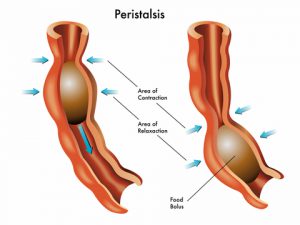ABOUT DIGESTIVE MOTILITY
 In normal digestion, food and liquids are propelled through the digestive tract by wavelike rhythmic and coordinated contractions called peristalsis.
In normal digestion, food and liquids are propelled through the digestive tract by wavelike rhythmic and coordinated contractions called peristalsis.
Digestive motility disorders are characterized by a disruption to normal peristalsis. This disruption can result in slow contractions, rapid contractions or a combination of both slow and fast contractions. In some cases, peristalsis may be totally absent.
Digestive motility diseases and disorders may affect any one portion or the entire digestive tract. Sometimes there may be no visible sign that a person is suffering from a motility problem. Some people affected by motility disorders may be underweight, while others may be of average weight or even obese.
Primary digestive motility diseases and disorders have no underlying disease causing the problem. Secondary digestive motility diseases and disorders occur as a result of another disease or medical condition. Examples of secondary causes include diabetes, Parkinson’s Disease, scleroderma, lupus, muscular dystrophy, endocrine disorders, neurological disorders, laxative abuse and abdominal surgery.
Some digestive motility diseases and disorders may be familial, which means that they are inherited. In some cases, however, the digestive motility diseases may be idiopathic, which means that there is no known cause.
Motility diseases and disorders can affect infants, children and adults of all ages. They can affect males and females and can be found in all ethnic groups. Although some people are born with a motility disorder, others may acquire this type of illness during their lifetime.



